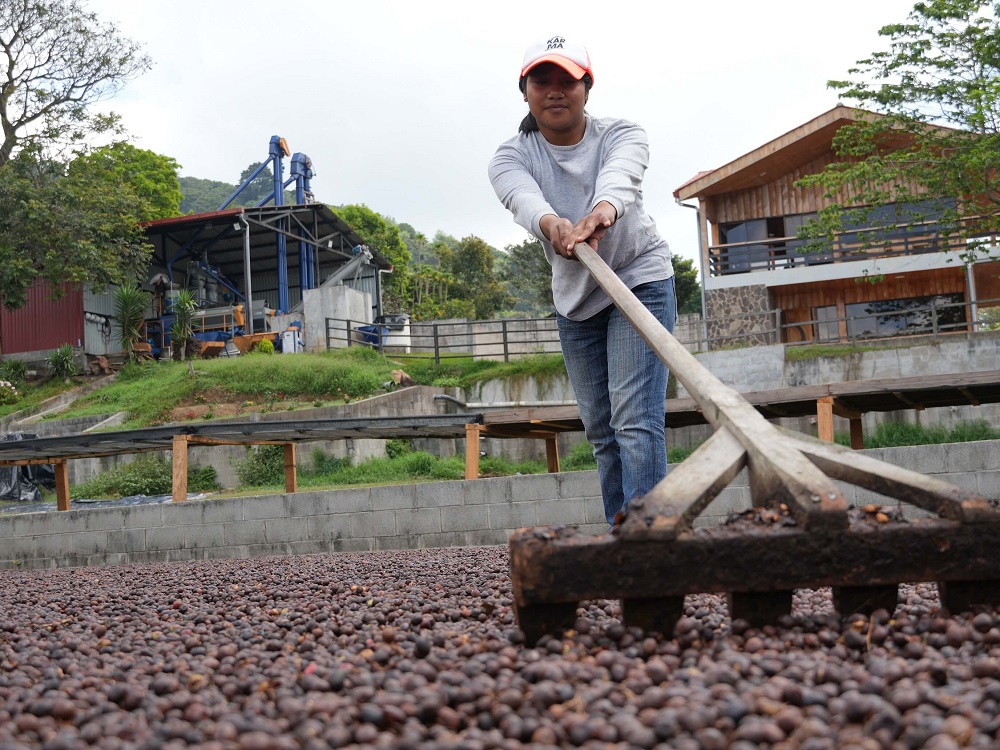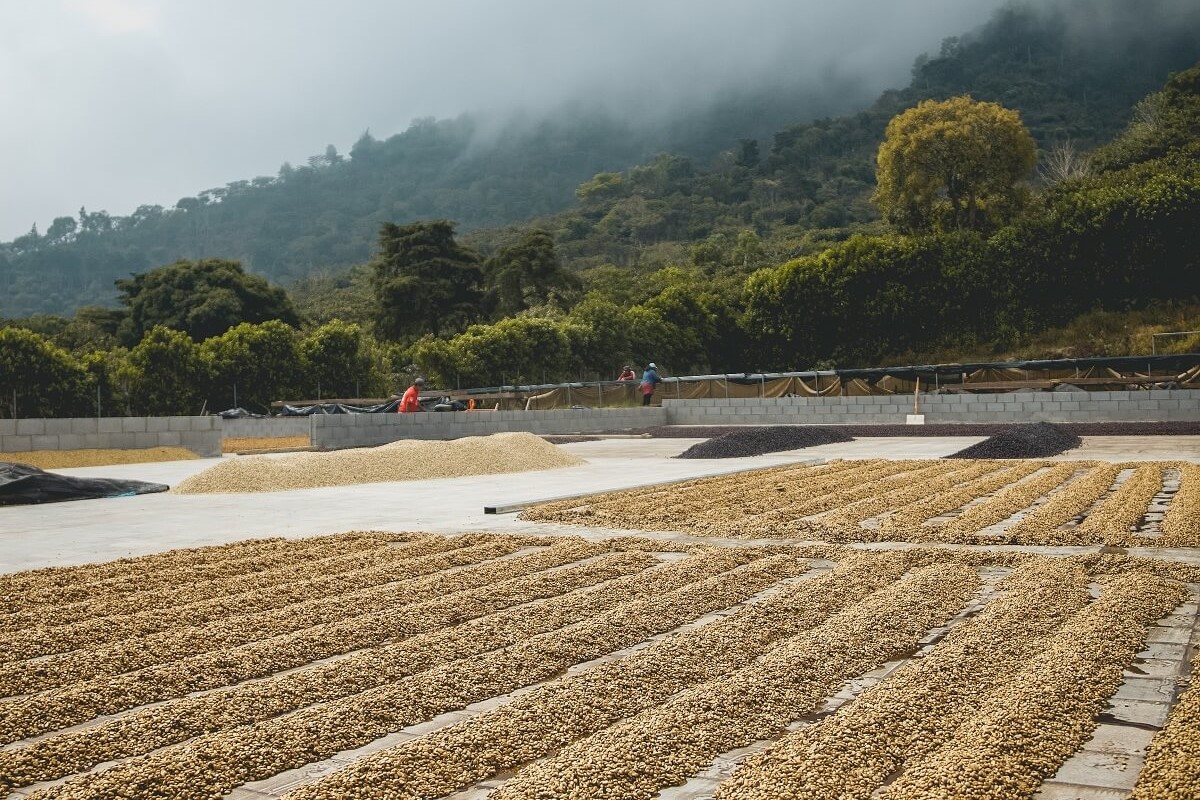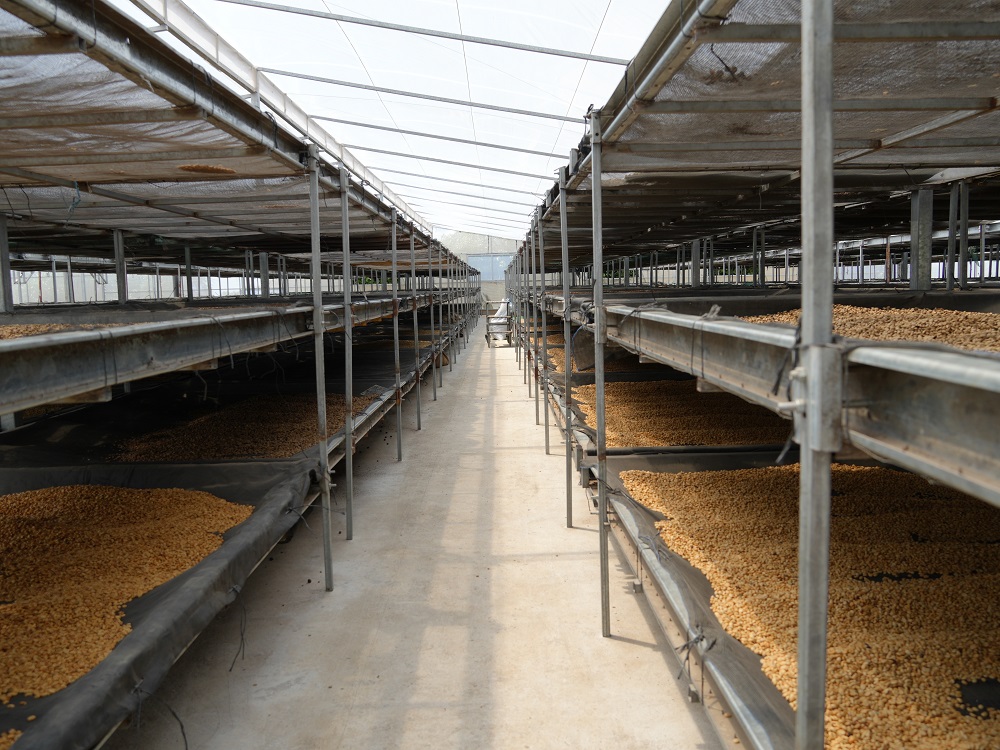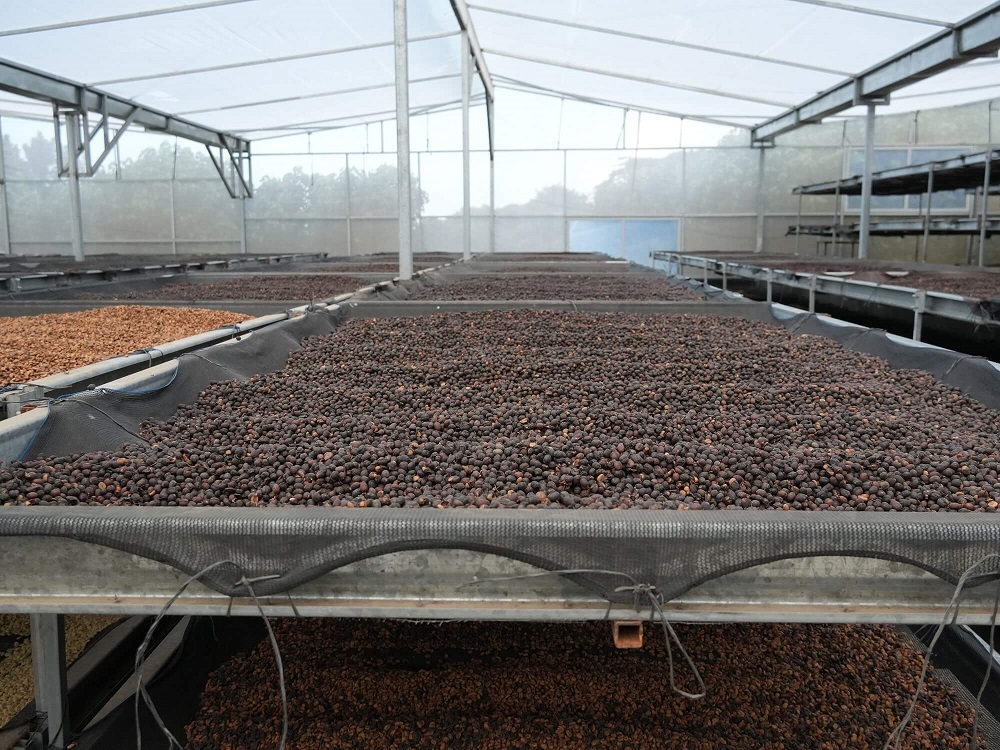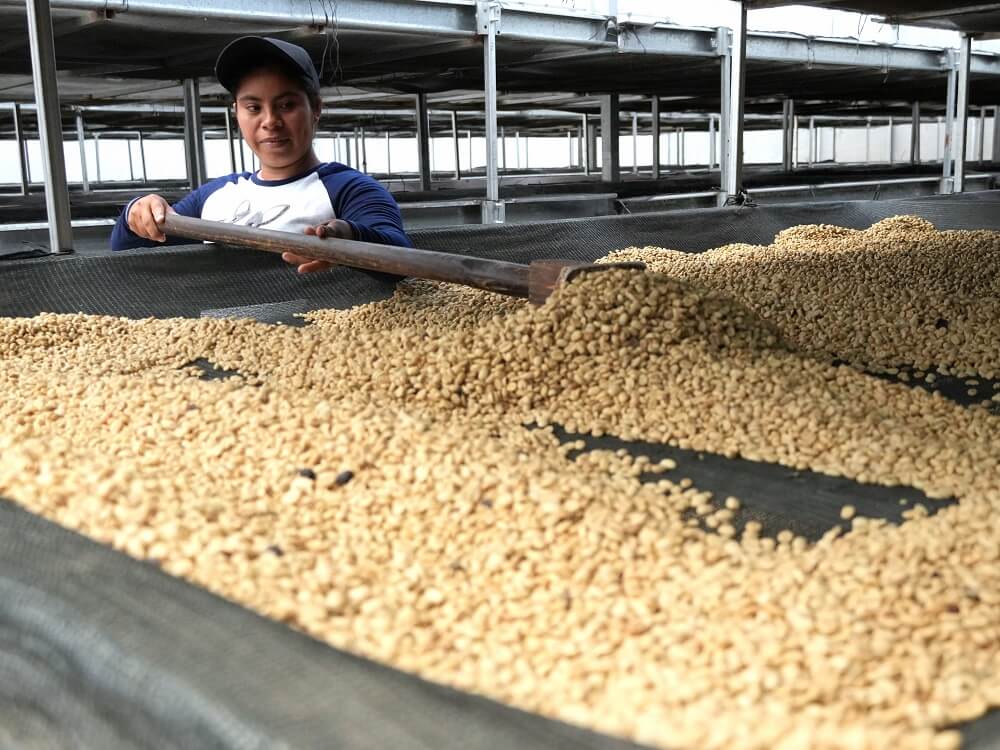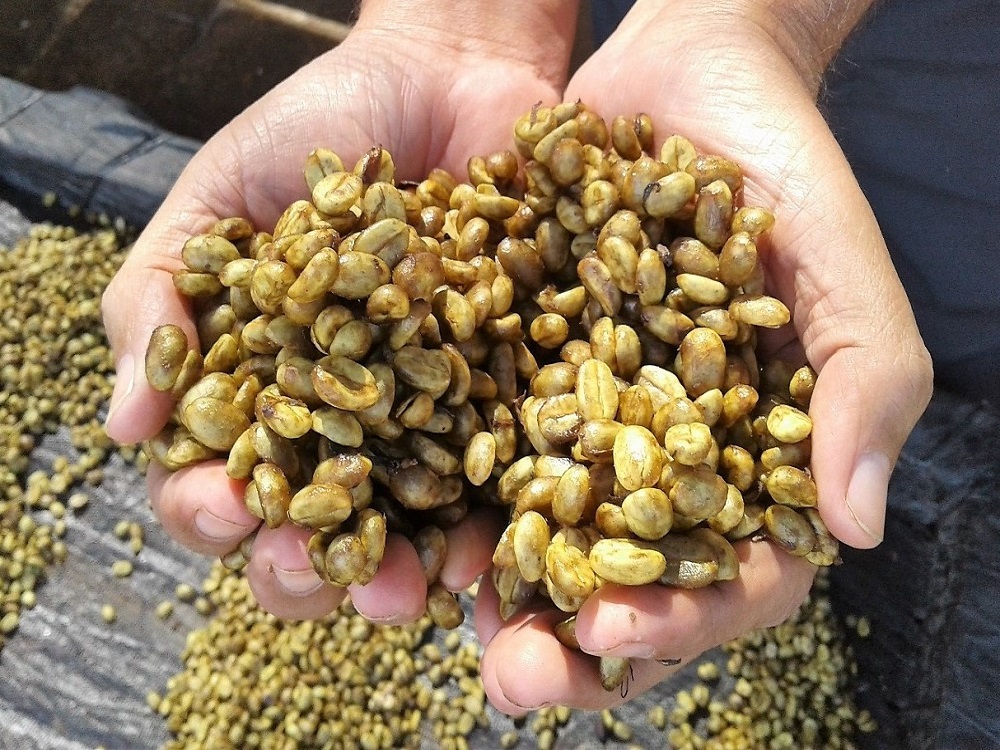Coffee Processing Plant
Our coffee processing plant is a state-of-the-art facility that is dedicated to the production of high-quality coffee beans.
Specialty coffee is not just the result of cultivation, but of a series of precise and careful decisions throughout the process.
Every stage—from harvesting to cupping—influences the final flavor that reaches the cup. Traceability, innovation in fermentation,
and respect for the bean and its environment are essential to achieving exceptional coffees.
1. Coffee Picking
Specialty coffee harvesting is selective and manual, which means that only ripe fruits are picked. (deep red color).
2. Coffee Processing
This is one of the most crucial steps in the coffee's sensory profile. Here, the pulp is separated from the bean and fermentation begins.
3. Drying
After processing, the beans must be dried to a moisture content of 10–12%. Pre-dried in patios for 3–5 days and Controlled solar drying for 20–30 days more.
4. Storage
Coffee must be stored in optimal conditions to preserve its quality. In cool, dry, and dark places, away from odors and humidity
